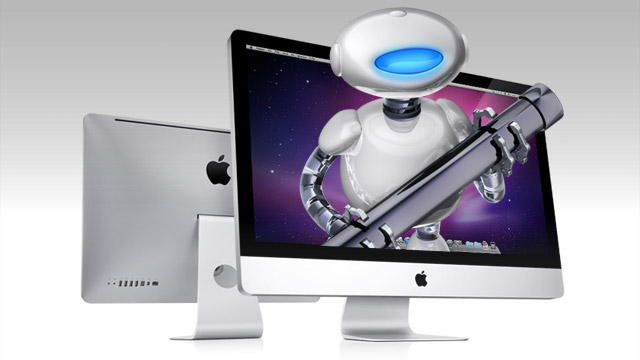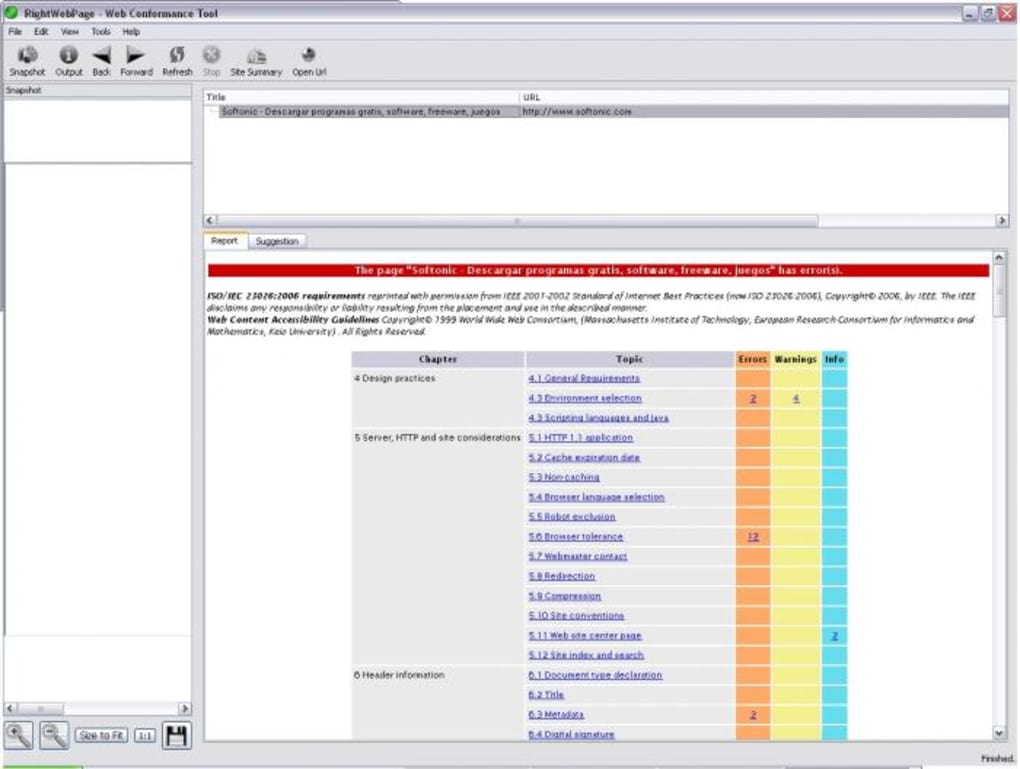Rightwebpage For Mac

Acrobat 3D is a Windows-only program; depending on how successful it is (how much cash it brings to Adobe), it may be available eventually for Mac. But I wouldn't put money on that; Adobe has a long history of putting out products and then discontinuing them because there was no market for it. In other words, Adobe was producing a solution for a problem that didn't exist, as well as having no coherent strategy for selling that particular product to anyone; i.e., they couldn't explain why anyone would need it. Regards and thanks as always.

I have started to take a look in the Acrobat forums. I realize some of this is sort of non-topic to the forums but I couldn't find a good place to post some of them. I find the Adobe suite of software a little confusing and they are not really great at letting you know when you have mac vs. Windows info on the site. My understanding is that 'Acrobat3D' (to be honest I am not sure I have even found the right web page on the Adobe site for this) allows me to embed 3D data in a pdf in a manner that will let me rotate it around in real time.
There was also some functionality that automatically 'exploded' a 3D file into parts in a sort of engineering type drawing. File formats vary but I imagine there is some restriction on which kinds of files it can work with. Anyway, I have started to think that there is a plugin to one of the Adobe Acrobat softwares that allows for 3D embedding and I was hoping to thrash around on the forums a bit to see if there are any alternatives or even a bona fide product from Adobe that will work on the mac. I run windows on the mac so I can buy the windows version but ideally it would sit in the same folder with my other mac applications if at all possible. I know there is not a lot on the forums for this kind of thing but again I was just hoping to kind of get the question out there and see if I can get some hard info and advice on it. Thank you as always. Apple Footer.
This site contains user submitted content, comments and opinions and is for informational purposes only. Apple may provide or recommend responses as a possible solution based on the information provided; every potential issue may involve several factors not detailed in the conversations captured in an electronic forum and Apple can therefore provide no guarantee as to the efficacy of any proposed solutions on the community forums. Apple disclaims any and all liability for the acts, omissions and conduct of any third parties in connection with or related to your use of the site. All postings and use of the content on this site are subject to the.
Every computer on a network has a unique identifier. Just as you would address a letter to send in the mail, computers use the unique identifier to send data to specific computers on a network. Most networks today, including all computers on the Internet, use the TCP/IP protocol as the standard for how to communicate on the network.
In the TCP/IP protocol, the unique identifier for a computer is called its IP address. IP Address There are several ways of determining your computer's IP address:. Visit online tool sites like. Upon reboot of your machine, the network diagnostic/connection settings are usually shown as the operating system loads MAC Address In computer networking, a Media Access Control address, better known as MAC address, is a unique identifier assigned to a network adapter or network interface card (NIC) by the manufacturer for identification. The MAC address can also be called the Ethernet Hardware Address (EHA), hardware address, adapter address or physical address.
Compaq presario 900 driver for mac. Step 3 -> After the step above, the out-dated Wireless drivers and other drivers will be found. Step 2 -> Click the 'Start Scan' button to scan your Windows 7 system drivers and find the out-dated Wireless drivers automatically.
Your computer may have more than one MAC address. Do you have wireless and an ethernet port? Then you have at least two MAC addresses. Your smart phone probably also has a MAC address - my iPhone has two; one for wireless and one for bluetooth. MAC addresses are typically 6 groups of two hexadecimal digits (0-9,A,B,C,D,E,F), separated either by colons (:) or hyphens (-).
The Wi-Fi Mac address on my iPhone, for example is: 00:1C:B3:09:85:15. The first three numbers, 00:1C:B3, are an Apple manufacturing code; only Apple products will have MAC address starting with those digits.
Download Pages For Mac
( Settings then General then About then Wi-Fi Address) Why do you care about MAC addresses? Generally speaking, you don't. But if you are having trouble with connecting to a network or if your computer has been hacked, then the ACCC's security, networking, operations, or repair folks might need you to tell them what it is to help them troubleshoot your problem. So here is how to tell. Note that you must have TCP/IP installed to be able to query your MAC address.
Windows NT, 2000, XP, Vista, Windows 7. Click Start then Run (in Windows 7, Start and type in the Search Programs and Files box.). Enter: cmd. Enter: ipconfig /all If the output scrolls off your screen, and it will on Vista and Windows 7, use: ipconfig /all more.
The Physical Address is your MAC address; it will look like 00-15-E9-2B-99-3C. You will have a physical address for each network connection that you have. The is the ipconfig output on Windows XP. My XP computer has two network connections - an ethernet connection, labeled Local Area Connection, and a wireless connection, labeled Wireless Network Connection (the wireless connection isn't currently set up). The actual network adaptors present in your computer are all that XP lists.
Vista and 7, on the other hand, lists many additional possible network connections, even if they aren't being used. But the Wireless and Local Area Connection sections are the same. Windows 95/98/ME. Click Start then Run. Type: winipcfg and click OK. Select the network adapter you are interested in,.
The box marked Adapter Address is your MAC address; it will look like 00-15-E9-2B-99-3C. Mac OS X Up to Tiger, Mac OS X 10.4. Click on the Apple menu then System Preferences then Network. MAC address for wired ethernet connections:.
From the Show: menu, select Built-in Ethernet. On the Ethernet tab ( TCP/IP tab for Mac OS X 10.2 and earlier), the Ethernet ID is your MAC address. MAC address for wireless connections:. From the Show: menu, select AirPort. On the AirPort tab, the AirPort ID is your MAC address. The illustration below is the AirPort tab on Mac OS X Tiger. Mac OS X Leopard and Snow Leopard, 10.5 and 10.6.
Click on the Apple menu then System Preferences then Network. MAC address for wired ethernet connections:. Select Ethernet from the list on the left. Click the Advanced button. On the Ethernet tab, the Ethernet ID is your MAC address. MAC address for wireless connections:. Select AirPort from the list on the left.
Click the Advanced button. On the AirPort tab, the AirPort ID is your MAC address.
Macintosh Classic with Open Transport. Click on the Apple Menu then Control Panels then TCP/IP Control Panel. From the Connect via: menu, select Ethernet. Click the Info button. The Hardware address is your MAC address. Macintosh Classic with MacTCP If you have Open Transport, use it. If not, while you are connected to an ethernet network (the Internet, for example), do the following:.
Click on the System Folder then Control Panel then MacTCP Control Panel. Without the Shift or Caps Lock keys depressed, and while holding down the Option key, click the Ethernet built-in icon. The Hardware address is your MAC address.
Linux. Become root, using su. Enter: ifconfig -a # ifconfig -a eth0 Link encap:Ethernet HWaddr 00:09:3D:12:33:33 inet addr:10.248.155.17 Bcast:10.248.255.255 Mask:255.255.0.0 inet6 addr: Scope:Link UP BROADCAST RUNNING MULTICAST MTU:1500 Metric:1 RX packets: errors:0 dropped:0 overruns:0 frame:0 TX packets: errors:0 dropped:0 overruns:0 carrier:0 collisions:0 txqueuelen:1000 RX bytes: (2.5 GiB) TX bytes: (3.7 GiB) Interrupt:185.
The ethernet devices are called eth0, eth1, and so on The MAC address is in the first line of the output, labeled HWaddr, it is 00:09:3D:12:33:33. Solaris / Sun OS. Become root, using su. Enter: ifconfig -a # ifconfig -a ce0: flags=1000843 mtu 1500 index 2 inet 128.248.xx.xx netmask ffffff00 broadcast 128.248.xx.255 ether 0:3:ba:21:33:33. The ethernet device is often called leo or ie0, but in this case, it is ce0.
The MAC address is labeled ether, it is 00:03:ba:21:33:33 - note that Solaris and SunOS takes of leading 0's from MAC addresses. FreeBSD / NetBSD. Become root, using su.